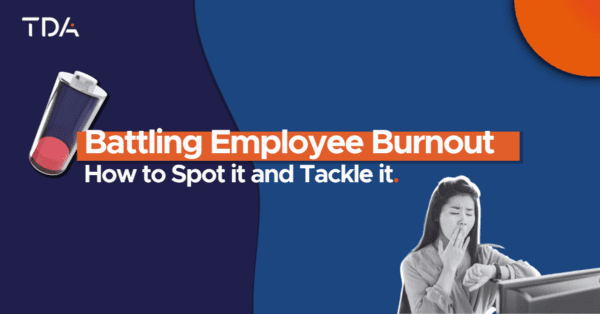Have you ever felt like your office chair is extra comfy or your coffee mug is practically glued to your hand?
In today’s fast-paced work environment, employee burnout has become a significant concern for employers and employees.
The pressure to meet targets, constant connectivity through digital devices, and blurred lines between work and personal life have all contributed to a growing epidemic of burnout.
According to a Gallup survey of 7500 employees, 23% reported feeling burned out.
Furthermore, 63% of employees are more likely to request sick leave if they are experiencing burnout at work or are dealing with personal issues. Even if they do not request time off, their performance will suffer by 13%. (Gallup)
Here, we’ll look at the causes, symptoms, and, most importantly, strategies for combating employee burnout and fostering a healthier, more productive workplace.
What is employee burnout?
Employee burnout is a state of emotional, mental and physical exhaustion at work. Burnout can manifest in different ways, including reduced job performance, increased absenteeism, and a negative impact on overall well-being.
It is critical to recognise that factors other than heavy workloads cause burnout. It can also be caused by a lack of control, insufficient support, or a mismatch between a person’s skills and the demands of their role. Workers may feel as if they are doing nothing or have lost interest in their work when this occurs.
Recognising the signs
Recognising burnout symptoms is critical for both employees and employers; common indicators include:
Physical exhaustion: Constant fatigue, sleeping difficulties, and physical symptoms such as headaches or stomachaches.
Emotional Detachment: Feeling distant or detached from one’s job, colleagues, and previously enjoyable tasks.
Reduced Performance: A drop in productivity, work quality, and overall job performance.
Cynicism and Negativity: Dissatisfaction with one’s job, colleagues, or the organisation as a whole.
Lack of Satisfaction: A sense of being unfulfilled despite completing tasks or meeting goals.
How to prevent employee burnout
Promote work-life balance: Encourage employees to maintain clear boundaries between work and personal time. When possible, discourage after-hours emails and offer flexible work arrangements.
Open communication: Create an environment where employees can express their concerns without fear of repercussions. One-on-one check-ins regularly can provide a forum for discussing work-related challenges and stressors.
Empowerment and Freedom: Give employees control over their work and decision-making processes. Employees who are empowered are more likely to be motivated and burn out less frequently.
Provide Resources and Support: Provide resources such as training, mentorship, and tools to assist employees in better managing their tasks and responsibilities.
Recognise and Reward: Recognise and reward employees’ efforts and accomplishments through formal recognition programmes and informal expressions of gratitude.
Encourage holidays and breaks: Encourage regular breaks during the workday and employees to take their holiday days to relax and recharge.
Enhancement of Skills: Make opportunities for skill development and growth available; this will boost employees’ confidence in effectively carrying out their responsibilities.
Improve Team Dynamics: A cohesive and supportive team can help to reduce feelings of isolation and contribute to a more positive work environment.
Set Realistic expectations: Ensure that workloads are reasonable and appropriate for employees’ abilities. Unrealistic expectations can quickly result in burnout.
Lead by Example: Managers and leaders should set a good example by modelling healthy work habits and emphasising the importance of self-care and work-life balance.
Conclusion
Employee burnout is a complex problem that affects both individuals and businesses. Employers can create a workplace that prioritises well-being and productivity by recognising the signs, understanding the underlying causes, and implementing effective strategies.
Remember that fostering an open communication, empowerment, and support culture not only helps to combat burnout but contributes to a more engaged and motivated workforce. In the end, everyone benefits from a balanced and harmonious work environment.





